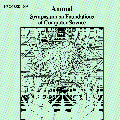In the classic Correlation Clustering problem introduced by Bansal, Blum, and Chawla (FOCS 2002), the input is a complete graph where edges are labeled either $+$ or $-$, and the goal is to find a partition of the vertices that minimizes the sum of the +edges across parts plus the sum of the -edges within parts. In recent years, Chawla, Makarychev, Schramm and Yaroslavtsev (STOC 2015) gave a 2.06-approximation by providing a near-optimal rounding of the standard LP, and Cohen-Addad, Lee, Li, and Newman (FOCS 2022, 2023) finally bypassed the integrality gap of 2 for this LP giving a $1.73$-approximation for the problem. In order to create a simple and unified framework for Correlation Clustering similar to those for typical approximate optimization tasks, we propose the cluster LP as a strong linear program for Correlation Clustering. We demonstrate the power of the cluster LP by presenting new rounding algorithms, and providing two analyses, one analytically proving a 1.56-approximation and the other solving a factor-revealing SDP to show a 1.485-approximation. Both proofs introduce principled methods by which to analyze the performance of the algorithm, resulting in a significantly improved approximation guarantee. Finally, we prove an integrality gap of $4/3$ for the cluster LP, showing our 1.485-upper bound cannot be drastically improved. Our gap instance directly inspires an improved NP-hardness of approximation with a ratio $24/23 \approx 1.042$; no explicit hardness ratio was known before.
翻译:暂无翻译



